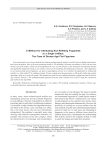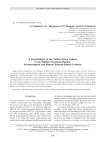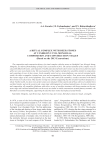Archaeology, Ethnology & Anthropology of Eurasia @journal-aeae-en
Статьи журнала - Archaeology, Ethnology & Anthropology of Eurasia
Все статьи: 524

A metric analysis of a human cranium from the Khatystyr cave, Republic of Sakha (Yakutia)
Статья научная
We present the results of a metric study of a male Early Holocene cranium found in a cave near the Khatystyr village, Yakutia, in 1962. Eight measurements taken on the specimen were subjected to canonical discriminant analysis, using individual data on 14 ancient samples from Siberia and the Far East. Euclidean distances between these samples were calculated, and k-means clustering was performed. Results revealed similarity of the Khatystyr individual with Serovo crania from Cis-Baikal and with the Neolithic series from the Baraba forest-steppe. This suggests that the Khatystyr male is closely related to the earliest Upper Paleolithic populations of North Asia. A related component, assimilated by members of later migration waves, was also detected in other Northeast Asia territories, including Sakhalin, but is absent in the Neolithic samples from Primorye, in the Old Koryak and Old Bering Sea samples. Comparison with the Late Neolithic Ymyyakhtakh sample from Diring-Yuryakh, Yakutia, reveals no continuity between Early and Middle Holocene groups of that region. The Diring-Yuryakh sample shares no similarity with any other group, and likely represents an isolate.
Бесплатно

A monumental horse burial in the Armenian highlands
Статья
Here we report on the unprecedented discovery of the complete skeleton of a ritually interred adult stallion with a bronze ring in its mouth. The horse was buried in a unique 15-meters diameter monumental stone-built tomb excavated in the Aghavnatun necropolis located on the southern slopes of Mt. Aragats, in the northern fringes of the Ararat Depression, Republic of Armenia. The tumulus was roughly circular; the horse’s remains were found in situ, in an inner oval-shaped structure. Our methodological procedure included a detailed description of the burial, a taphonomic study of the bones, and meticulous morphometric observations and measurements, and thus we could provide a taxonomic defi nition and an age estimate. Direct radiometric dating of the horse’s skeleton provided a date of 2130±20 BP. The morphological characteristics of the horse, with its tall stature and slender feet, suggest that it was a large individual, similar to the extinct breed of Nisean horse previously known mainly from textual and iconographical sources. The metal ring found in the mouth of the horse suggests that it likely served as a breeding stallion. This discovery presents a unique combination of zooarchaeological evidence for the importance of the horse in the Parthian-Hellenistic worlds, and advances our understanding of the broad social signifi cance of the past breeding of equids in the Armenian Highlands.
Бесплатно
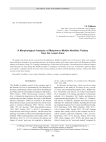
A morphological analysis of Malyshevo middle Neolithic pottery from the Lower Amur
Статья обзорная
Бесплатно
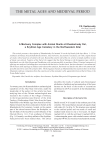
Статья
This article presents a description of Khankarinsky Dol mound 34 on the left bank of the Inya River, 1–1.5 km southeast of Chineta, Krasnoshchekovsky District, Altai Territory. Excavations revealed a cist with a supine burial of a male, whose head was oriented to the east. Beyond the eastern wall of the cist, a horse cranium and three crania of sheep were placed. Features of the burial rite suggest that the burial belongs to the Korgantass type, which is distributed over the Altai-Sayan and Kazakhstan, with certain parallels in northern China. Principal categories of offerings are analyzed, including those associated with the horse. On their basis, the horse harness is reconstructed. On the basis of the typology of artifacts and radiocarbon analysis, the burial was dated to the 5th to 4th centuries BC (possibly late 5th to early 4th centuries BC). The Korgantass burials at Khankarinsky Dol and elsewhere in the Altai Mountains indicate a migration from the eastern part of the nomadic world, apparently from northern China or the Trans-Baikal region.
Бесплатно
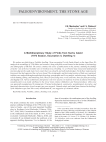
A multidisciplinary study of finds from Suchu island (1973 season, excavation II, dwelling 1)
Статья обзорная
Бесплатно

Статья научная
In recent years, dendrochronological analysis in archaeology has undergone a substantial transformation, offering an opportunity to use samples of wood that were previously considered uninformative. One striking example is the analysis of charcoal excavated from archaeological sites. We have studied 448 samples of charcoal collected from metallurgical (iron smelting) furnaces in the Kurai and Chuya basins of the Russian Altai Mountains. Earlier methods of preparing such samples were slow and ineffi cient. Our approach guarantees fast, simple, and high-quality preparation of a large number of samples of virtually any size and shape. Its advantages include low cost of apparatus, high quality measurement of annual rings, the possibility of effi cient remote measurement, no need for verifi cation, and a wider range of measured parameters of the annual ring. Hopefully, the new approach will help to solve the critical problem relating to the construction of a tree-ring chronology in the arid zone of Southern Siberia. Such a c hronology will be highly prospective for assessing the age of wood from numerous mounds in the intermountain depressions of the Altai- Sayan region, and year-by-year reconstructions of the humidity regime; and for revealing extreme droughts and other climatic phenomena in this territory.
Бесплатно
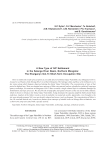
Статья научная
Here we outline the results of excavations at a recently discovered Initial Upper Paleolithic site, Kharganyn Gol-13, located on a tributary of the Selenga River in northern Mongolia. The Selenga valley and those of its tributaries were key routes along which humans dispersed during the Initial Upper Paleolithic. The concentration of sites of that period is highest here. Most are situated near outcrops of lithic raw material and are classifi ed as relatively long-term quarry-workshops. Excavations at Kharganyn Gol-13 have revealed a single cultural layer in sediments damaged by bioturbation and slope processes. We describe the stratigraphy and spatial structure of the site and its lithic industry, which is shown to belong to the Initial Upper Paleolithic, being dominated by opposite platform bidirectional blade reduction. Analysis of the lithics reveals a lack of available raw materials nearby. Apparently, cores brought to the site were already prepared. All cores are heavily reduced and scarce, tools are frequent. The concentration of lithics is low. We conclude that the site, located at a distance from outcrops of suitable rocks on Selenga River tributaries, was a short-term camp associated with a specifi c activity.
Бесплатно

A runic inscription at Kalbak-Tash II, Central Altai, with reference to the location of the AZ tribe
Статья обзорная
Бесплатно
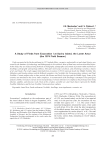
A study of finds from excavation I at Suchu island, the Lower Amur (the 1974 field season)
Статья
Бесплатно

A study of human bones from a dwelling at Ust-Voikar, in the subarctic zone of Western Siberia
Статья обзорная
Бесплатно
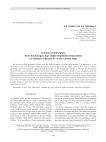
Статья научная
We describe a large fragment of fabric from the under-headdress excavated from mound 51 at Yaloman II—a site on a high terrace near the place where the Bolshoy Yaloman fl ows into the Katun, Central Altai. Various criteria, including radiocarbon analysis, suggest that the burial dates to the Xiongnu Age (200 BC to 100 AD). The structure of the textile was assessed microscopically. On the basis of morphological criteria, the fi bers were identifi ed as silk. The fabric is described according to the accepted international standards. Results attest to the use of a treadle loom for producing polychrome silk fabric, from which the early nomads sewed a headdress in the form of a cap or bonnet. Such a prestigious material was produced in limited quantities in China to decorate details of clothing worn by the elite. Decorative silk items could have been imported from there to the Altai as gifts received by the leader of the nomadic Xiongnu Empire in Inner Asia. The Altai was part of this empire, as demonstrated by the entire assemblage of funerary items from Yaloman II.
Бесплатно

A zoomorphic antler staff from an Early Neolithic burial at Pushkinsky, the Orenburg region
Статья обзорная
Бесплатно

